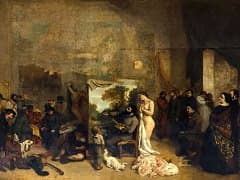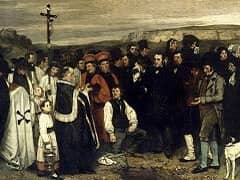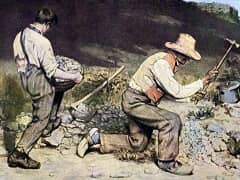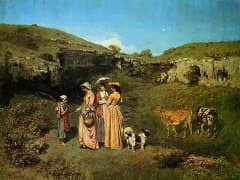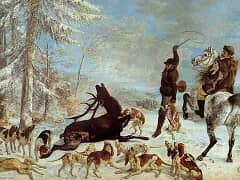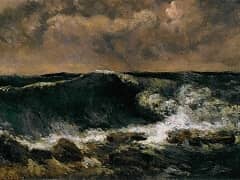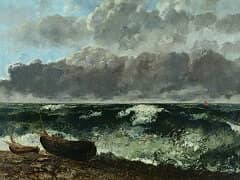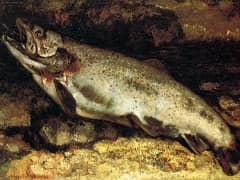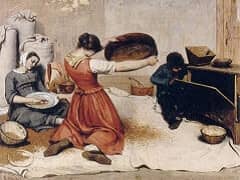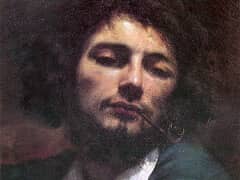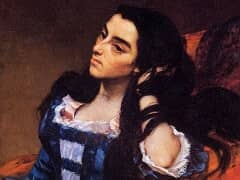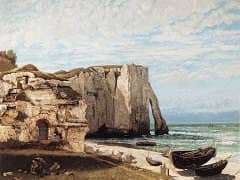Fox in the Snow, 1860 by Gustave Courbet
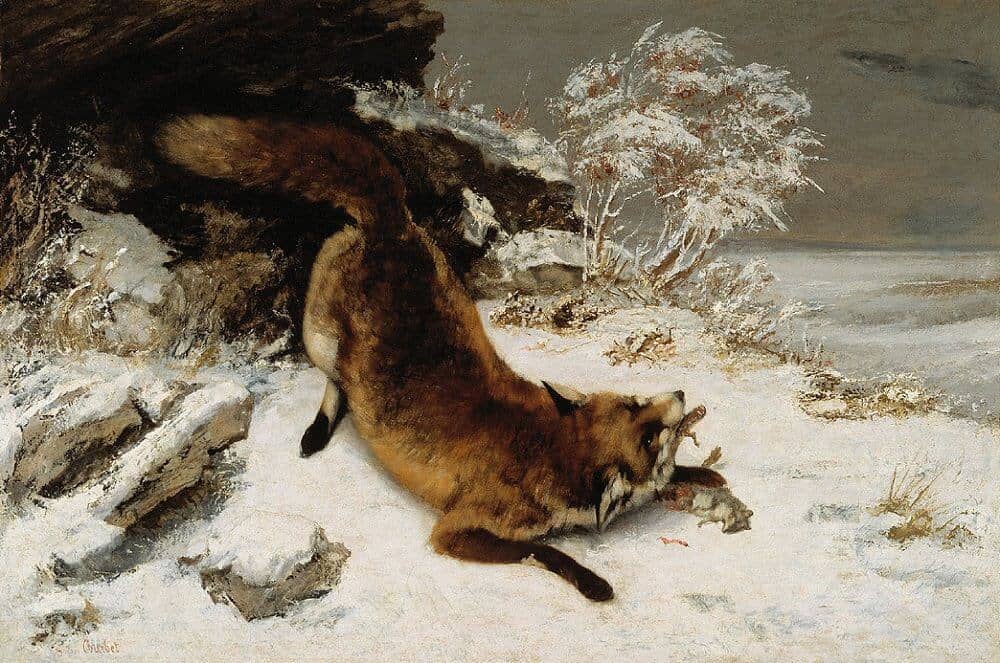
Fox in the Snow was one of four paintings on the theme of the hunt and wild game which were critically acclaimed at the Salon of 1861. In the mid-sixties it was in the collection of Khalil Bey, the noted Turkish collector resident in Paris who commissioned from Courbet both The Sleepers and The Origin of the World. Connoisseurs of painting responded immediately to Courbet's gifts as a painter of animals. Without exaggeration or anthropomorphizing, he was able to grasp their intense vitality both in action and in repose. Here he portrays the fox in the act of devouring the rodent he has just caught, his body concentrated on feeding and at the same time tensed enough, with haunches raised, to race away if threatened. His painting of the fox's fur is masterful; without literalism and while retaining the qualities of paint, he renders a virtually tactile sense of the depth and texture of the animal's pelt.
Fox in the Snow communicates a sense of Courbet's deep identification with the animals he painted and hunted. Here the fox, proud and strong, is itself the predator rather than the prey. In such a painting we can see the artist's clear and unsentimental understanding of the natural world: his respect for wild animals, their habitat and their means of survival. Such a view was becoming rare in a world going headlong into technological revolution, with all its malign consequences for wild nature; the image speaks to us anew in our own life among these consequences. The setting of the fox in a snowy landscape is one of the early instances of what was to become something of a specialty of Courbet's; landscapes painted with the neutral palette imposed by snow were not common at the time, and collectors often asked specifically for a snow scene from his hand.


